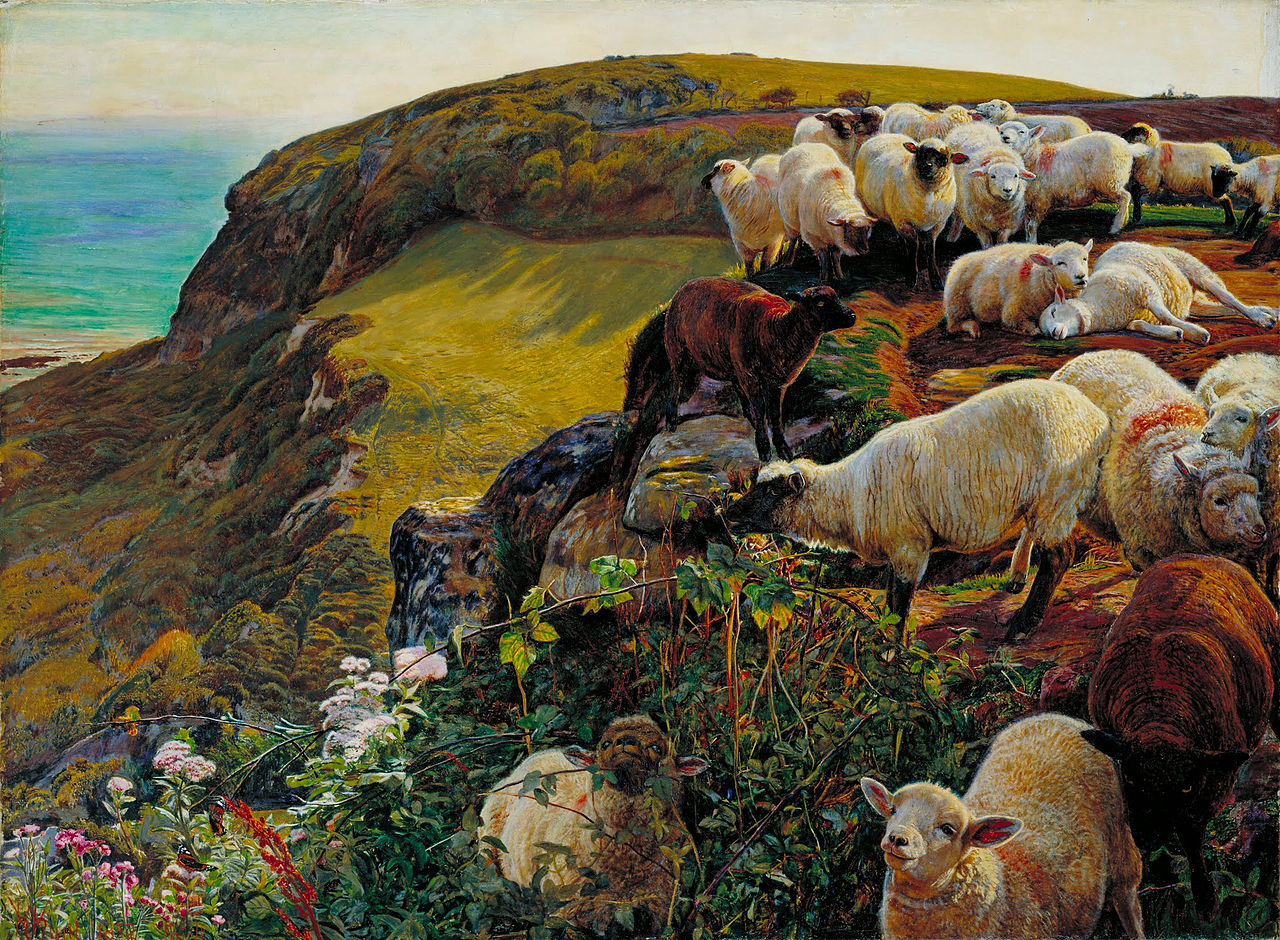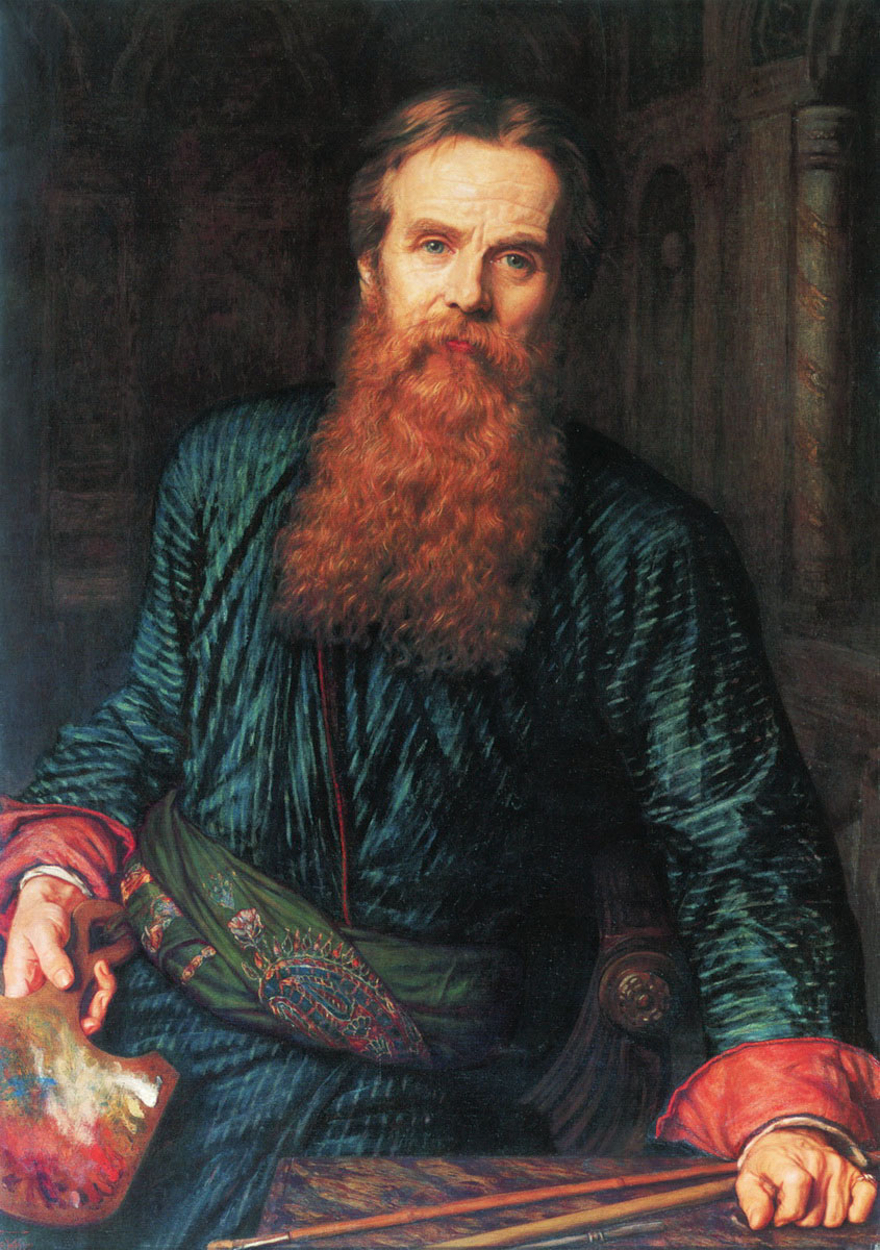In Modern Painters (1847) the writer and critic John Ruskin (1819-1900) exhorted young English artists to 'go to nature in all singleness of heart, and walk with her laboriously and trustingly, having no other thoughts but how best to penetrate her meaning, and remember her instructions; rejecting nothing, selecting nothing, and scorning nothing; believing all things to be right and good, and rejoicing always in the truth.' Following Ruskin's dictum that art in its truthfulness can teach a moral lesson, William Holman Hunt created his greatest and most Pre-Raphaelite landscape. The picture was first commissioned as a replica of the sheep in the background of The Hireling Shepherd (1851-2, City of Manchester Art Galleries), which was bought by the eminent naturalist W.J. Broderip. The copy was destined for Broderip's cousin, Charles T. Maud, but Hunt apparently persuaded him that an original picture would be more desirable.




Our English Coasts, 1852 (‘Strayed Sheep’)
oil on canvas • 432 x 584 mm
 William Holman Hunt
William Holman Hunt